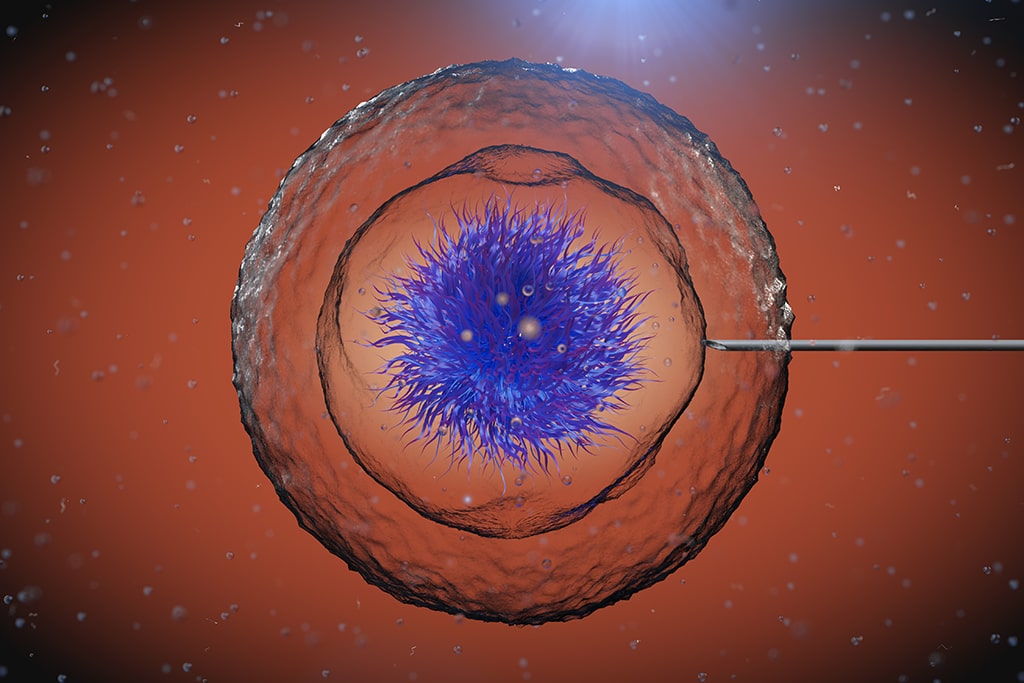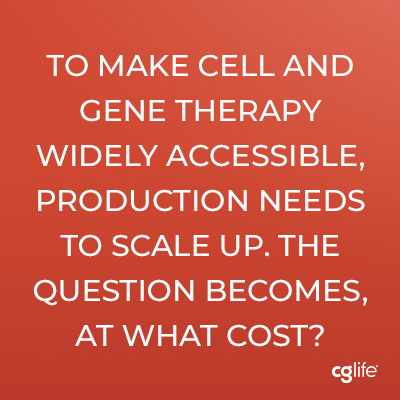

Cell & Gene Therapy: An Evolving Revolution
Cell and gene therapy—you may have heard of it? It could have been while reading about the first CRISPR-based therapy approved to treat sickle cell disease and beta-thalassemia around the end of 2023. Or perhaps, in the National Institutes of Health (NIH)’s announcement of the first tumor infiltrating lymphocyte (TIL) therapy receiving FDA approval for the treatment of melanoma. Or perhaps you read about current clinical applications of in vivo gene therapy in Cell Press. No matter how cell and gene therapy entered your radar, these treatments are changing the game across the clinic, the bench, and the boardroom. In this post, we explore the influences fanning the cell and gene therapy flame and some factors that could temper this growing market.
If you’re just entering the world of cell and gene therapy, cell therapy is exactly what it sounds like: using cells as therapy. This can mean taking patients’ cells, re-engineering them to accomplish a therapeutic function, and reintroducing them back into that patient. Or it can mean using batches of pooled stock cells as the treatment. Gene therapy, on the other hand, involves the editing of gene expression through the transfer of genetic material into the appropriate cells. And these techniques have garnered a lot of excitement! The cell and gene therapy market size, valued at USD 7.2 billion in 2023, is expected to grow at a compound annual growth rate of nearly 26.4% and is expected to reach $23.3 billion in 2028. Cell and gene therapy markets face potential hurdles despite these strong growth forecasts. Now let’s dive into the factors shaping this emerging market.
Cell & Gene Therapies: An Overview
Before we talk about the factors influencing cell and gene therapy, let’s recap what these areas represent. Traditional clinical treatments use chemical drugs to change biological systems. As described, cell and gene therapies alter biological materials as treatment. Let’s take CAR-T cell therapies as an example. CAR-T cells have an engineered T-cell receptor specific to cancer antigens. This targets cancer cells for destruction and has revolutionized cancer immunotherapy. But this technology has broad implications— new CAR targets are designed every day, making CAR-T cells a potential therapy for many other conditions. Interested in a more in-depth breakdown of how cell and gene therapies work? See our infographic here for details.
The evolution from chemical-based drugs to bioengineered treatments has revolutionized the biomedical and biopharmaceutical industries. Some key players in this space include Bristol-Myers Squibb, AstraZeneca, Gilead Sciences, Bluebird Bio, Iovance Biotherapeutics, Novartis, Smith Nephew, Amgen, Organogenesis, Roche (Spark Therapeutics), Dendreon, Pfizer, Vericel, and Vertex Pharmaceuticals. And as cell and gene therapies continue to develop, new industry leaders will also emerge.
Another burgeoning factor for cell and gene therapies is the potential for new treatment space.
Cell and gene therapies are currently focused on diseases with precise genetic origins. However, cell and gene therapy could be applied more broadly, for example, to treat cardiovascular disease. In this scenario, elements of the cardiovascular system need to be regrown or strengthened in a way that is difficult to treat with mainstream drugs. Cell and gene therapies could step into this space and repair these systems at the biological level.
Now that we’ve covered the broad strokes of cell and gene therapies, let’s jump into the factors defining these exploding fields.
Factors Driving Growth
As we noted, cell and gene therapies are rapidly occupying the drug development space.
“Forward-positioned and solid science being conducted now will make cell and gene therapy eventually very effective and affordable, just as how mRNA changed the way we fight the pandemic after decades of obscurity in the labs including ours,” said Dr. Jiwu Wang, Founder, and CEO of Allele Biotech. “Technologies like mRNA iPSC will create an unlimited amount of therapeutic and carrier cells to treat most common diseases, we know because we have been part of that process.”
Here, we’ll break down why these fields are so well-positioned for growth, including application, manufacturing, and funding innovations.


Clinical Advancements
To put it bluntly, cell and gene therapies are growing so fast because they’re a game-changer. They have massive clinical potential, taking precision medicine from a pipedream to reality.
To see how rapidly these fields are expanding, let’s quantify their growth. Today there are only 37 cell and gene therapy drugs approved by the Food and Drug Administration (FDA). However, over 1,500 therapies are in the approval pipeline. Furthermore, there has been a steep rise in Investigational New Drug (IND) applications for gene therapies, and there are no signs of the hot approval pace cooling down. The cell and gene therapy market is desirable because the products show seemingly endless possibilities for application.
Manufacturing
Manufacturing and production innovations are also allowing cell and gene therapies to flourish. These advances are crucial because cell and gene therapy production can reach a bottleneck during scale-up. As described by Adam Bryan, Vice President – Head of Personalized Medicines at Lonza, “Broadly speaking, one of the most important challenges facing the industry is increasing access. Accelerating the development of technology that can treat patients at the point of care can significantly reduce the labor and logistics required to deliver patient-specific therapies.”
Innovations in cell processing, storage, modification, and reintroduction are all bringing cell and gene therapies to an industrial scale. Automation is quickly filling the gaps in production. For example, machine learning accelerates genomics, artificial intelligence uncovers complex biological patterns, and robotic process automation streamlines physical production. With time, industry standards will help streamline the production and approval process.
Funding
The final piece of the puzzle is funding. While not a perfect correlation, heavy investment generally predicts strong growth. In 2023, there was more than invested in cell and gene therapies. Mergers and acquisitions, such as the acquisition of Tmunity Therapeutics by Gilead and the collaboration of Sarepta Therapeutics and Catalent, further drove capital investment in cell and gene therapies. Beyond industry, academia continues funding the basic research backbone of biopharma. We believe these investments will pave the way for cell and gene therapy to continue revolutionizing patient care.
Potential Challenges
The future of cell and gene therapy is bright, but there are nuances to this rosy outlook. To have a complete picture, it’s important to consider all factors influencing the technology. Here, we’ll unpack the potential challenges facing cell and gene therapy development.
High Cost of Development
Biological products are challenging to produce, leading to high costs. Expensive resources like tissue culture reagents, scientists, and primary cells are required for production. However, advancements in manufacturing and industry standardization may offset these costs. To make cell and gene therapy widely accessible, production needs to scale up. The question becomes, at what cost?


Regulation
Regulation is a double-edged sword in cell and gene therapy. Swift and sensible regulations ensure treatments are safe and effective, but can the FDA keep up with the pace of biotech? They’re trying! In 2023 the FDA’s Center for Biologics Evaluation and Research (CBER) created a super office called the Office of Therapeutic Products with over 500 employees to keep pace with incoming clinical development projects, streamline workflow processes, and improve efficiencies. However, each therapy has a unique path from development to commercialization, requiring agile regulation— not to mention dynamic coverage by insurance companies. Regulation plays a critical role in therapeutic safety but, if not sufficiently malleable, could make the road to approval bumpy for cell and gene therapy.
Ethical Concerns
Ethical concerns abound in cell and gene therapy. To start, stem cell applications can be contentious. While the public seems supportive of stem cell research, public opinion is capricious. Other vital questions include: What cells can be edited? Under what circumstances? And who has access? For example, is it ethical to edit hematopoietic stem cells (which generate red blood cells) for athletics? If not, how should this be detected and enforced? And where is the line between improving health and developing designer babies? The bioethicists of our time will certainly be busy.
Equitable access is another concern. Personalized medicine, a promise of cell and gene therapy, is equally powerful and expensive. Who will have access to this life-saving care? only those with deep pockets? Or is everyone entitled to the best treatment?
A final ethical consideration is the danger of misinformation. The science surrounding cell and gene therapies is incredibly complex. Unfortunately, we have seen how misinformation can seep into scientific spaces. Cell and gene therapy communications must be rooted in a solid scientific foundation. That’s where life science-focused marketing and communications agencies like CG Life come in— we speak the science.
Just the Beginning
Cell and gene therapies are just now realizing their full potential. No matter how these considerations, from investment to regulation, impact the future of cell and gene therapy, we are excited for this evolution in technology to lead to a revolution in the clinic.
